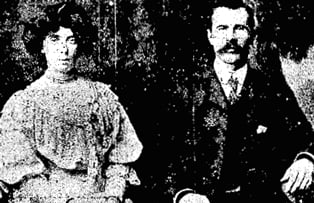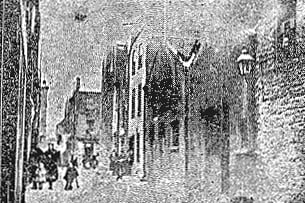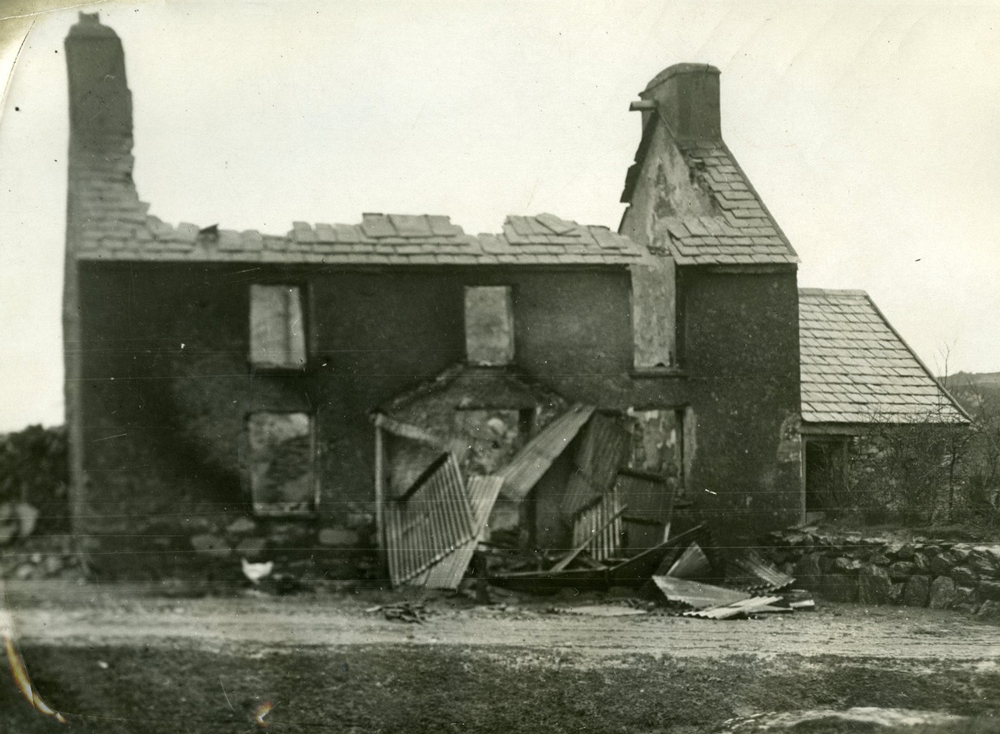Further deaths in ambushes and reprisals around the country
Dublin, 27 November 1920 - The number of men killed while allegedly attempting to escape the custody of the crown forces continues to grow, as does the number of people killed by apparent reprisal.
Yesterday the funeral took place of Volunteers Peadar Clancy and William McKee who, along with Conor Clune, were killed by police as they attempted, according to official sources, to make their escape from a guardroom on Exchange Court in Dublin on 22 November. This official account has been met by widespread scepticism.
Historian Cormac Ó Comhraí joins Myles Dungan on RTÉ'S The History Show to talk about the life of enigmatic revolutionary Peadar Clancy.
The events in Dublin carry a chilling echo of those reported from other parts of the country in recent days and weeks.
In Co. Clare, for instance, four young men were killed in the early hours of the morning of 17 November while allegedly trying to make their escape from their police escort in Killaloe. The men were part of a group of six who had been arrested under the Restoration of Order Act. The victims have been named as Martin Kildea, 27, Michael McMahon, 26, Alfred Rogers, 22, and John Egan, 24. All four were from Scariff and their shooting occurred shortly after midnight. The families of the men learned of their tragic demise when they received a telegram from a police sergeant, however when they made inquiries at the barracks, any further information was refused.
On the same morning as the killings in Clare, republicans shot dead Sergeant James O’Donoghue on White Street in Cork, about 100 yards from the entrance to Union Quay barracks, headquarters of the RIC in the city. The police response to his killing was swift and brutal: three men were killed and two wounded in shootings on North Mall, Broad Lane and Broad Street in the city. The deceased have been named as James Coleman, Eugene Connell, Patrick Hanley.
Differing accounts are already circulating as to who bears responsibility for these murders.
In the case of James Coleman, for instance, the official account from Dublin Castle notes that four or five ‘civilians in overcoats, with their capes drawn over their faces’ had called to his home and shot him three times when he opened the door.

|

|
L: Sergeant James O’Donoghue, who was shot dead on White Street in Cork by republicans, pictured here with his wife. R: Broad Street in Cork where James Coleman, Eugene Connell, Patrick Hanley were killed. (Images: Cork Examiner, 20 November 1920 and Freeman's Journal, 22 November 1920)
However, Mr Coleman’s widow disputes this version of events. She claims her husband opened the door to a tall man in a policeman’s cap and heavy overcoat who asked if he was Coleman. When he replied ‘Yes’, the policeman fired two shots at him from point blank range. As the policeman turned to leave, he fired two or three more shots at her husband who had fallen on a chair beside the door. Mrs Coleman insists that her husband, a member of the Chamber of Commerce and honorary treasurer of the Cork Industrial Development Association, had no involvement with politics.
These killings in Cork have led the Cork Examiner to publish an impassioned editorial under the heading ‘Thou shalt not kill’.
‘The fact that stands out painfully in the orgie [sic] of blood that has cast gloom over Cork and its citizens, is that lives have been taken, widows and orphans have been suddenly brought into existence in homes where joy and contentment formerly reigned, sorrow and mourning have superseded the amenities of ordinary life, and the spectre of death still stalks abroad. To the average peace-loving citizen, this overwhelming catastrophe that has so suddenly befallen the City of Cork, seems more like a terrible nightmare than a real occurrence in a Christian community; yet the bodies rigid in death of the police sergeant, shot in the public street and of the several men subsequently shot in their own houses, bear silent testimony to the reality of a great tragedy that revolts and appals.’
The outcry in response to these violent crimes has done little to stifle the unrest in the city.
A notice has been circulated by Black and Tans in relation to the disappearance of Thomas Downing, who was kidnapped while on his way to a Discharged Soldiers’ and Sailors’ meeting on 23 November. The message will be met with alarm by the people of the city and county. It read: ‘If Mr Downey [sic] is not returned to his home within 56 hours Cork citizens prepare, especially Sinn Féiners.’
[Editor's note: This is an article from Century Ireland, a fortnightly online newspaper, written from the perspective of a journalist 100 years ago, based on news reports of the time.]





















